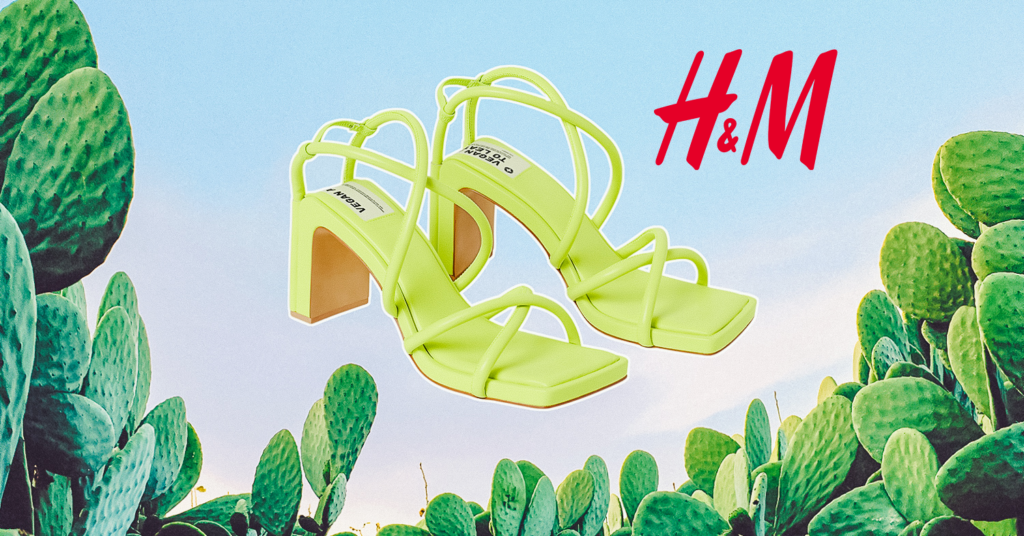H&M’s latest collection features “cutting-edge” sustainable materials, including vegan cactus leather.
The collection, called Science Story, is the first drop in the fashion brand’s Innovation Stories series, a sequence of clothing ranges designed with sustainability at the forefront.
According to a Q&A sent to LIVEKINDLY, this initial drop is an “ode to the beauty of science.” It aims to celebrate the “inspiring thinkers, researchers, and scientists who challenge the boundaries of sustainability.”
With that in mind, it utilizes a number of new, innovative, eco-friendly materials, like Desserto, for example, a plant-based vegan leather made with cactus plants. According to the chain, the cruelty-free material allows the brand to cut down on water-use.
Science Story also features EVO by Fulgar, a bio-based yarn made with castor oil seeds, as well as ECONYL, a fully regenerated nylon made with ocean waste, including discarded fishing nets. Other technologies include Agraloop and Texloop Rcot. The former transforms agricultural waste in natural fibres, and the latter creates recycled cotton with cotton waste.
“The Innovation Stories collections each push innovation to the next level with cutting-edge sustainability initiatives that represent the future of fashion,” Ella Soccorsi, H&M Concept Designer, said in the Q&A.

Is H&M Sustainable?
Innovation Stories is the latest in a long line of sustainable initiatives launched by H&M. Last year, one of its Stockholm stores started piloting Looop: a clothing recycling program that spins old fibers into new garments. In February of this year, the fashion giant partnered with Spanish footballer Héctor Bellerín to launch a new sustainable menswear collection featuring recycled materials.
On its website, it offers an entire Conscious range, made with sustainably-sourced, recycled materials. In 2019, around 57 percent of its materials were recycled, organic, or sustainably-sourced. By 2030, it’s aiming to use 100 percent sustainably-sourced materials.
But is it enough?
H&M is still part of the fast-fashion landscape, its main aim is to get consumers to buy as much of its clothing as possible. According to a 2018 article by Vogue Business, the retailer produces around 3 billion items of clothing every year. Most of that will go to waste. The Ellen MacArthur Foundation notes that around 92 million tonnes of garments are thrown away every year.
But according to Soccorsi, H&M is “determined to drive the change towards a more sustainable fashion industry.” She noted that collaboration, as seen in the Science Story collection, “is essential to achieve long-term change across the entire textile industry.”
“The challenges we are facing are too complex for any single company, no matter size, to tackle alone,” she continued. “Which is why we collaborate with other brands and stakeholders within different initiatives.”
H&M’s Sustainability Strategy
As for the amount of clothing H&M manufactures every year, Soccorsi did not confirm whether the retailer intends to produce fewer garments. But it’s not ignoring the problem. As strategic partner of The Ellen MacArthur Foundation, H&M is working to transition to a circular approach.
Soccorsi added: “Our Sustainability strategy details how we plan to move from a linear to a circular business model, in which resources remain in the system and nothing goes to waste –this means we won’t need to rely on natural resources to the same extent.”
“This involves using sustainably sourced, recyclable materials, and finding new ways to repurpose existing garments so that everything can be reused,” Soccorsi said. [The Science Story] collection is part of that journey.”


